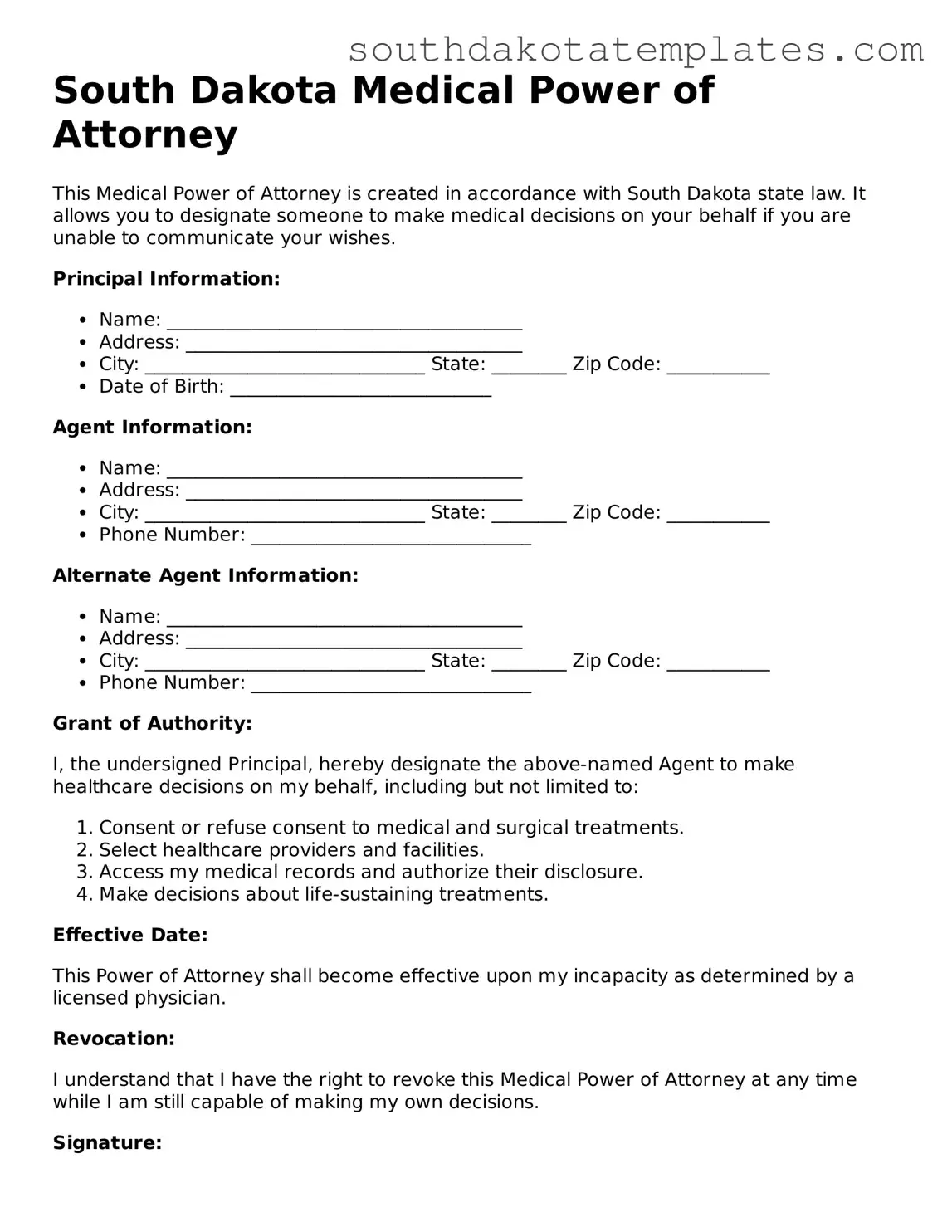Free South Dakota Medical Power of Attorney Document
A South Dakota Medical Power of Attorney form is a legal document that allows an individual to designate someone else to make medical decisions on their behalf if they become unable to do so. This important tool ensures that a person's healthcare preferences are honored, even when they cannot communicate them. Understanding how to complete this form is essential for anyone looking to secure their medical wishes.
Take control of your healthcare decisions by filling out the Medical Power of Attorney form today. Click the button below to get started!
Get Medical Power of Attorney
